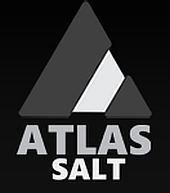 Claim Post produces 99.3% pure silica from Seymourville
Claim Post produces 99.3% pure silica from Seymourville
CLAIM POST RESOURCES INC. ANNOUNCES SGS LAKEFIELD TESTWORK GENERATES 99.3 PERCENT PURE SILICA SAND
SGS Mineral Services of Lakefield, Ont., has successfully produced 99.3 per cent pure silica sand from Claim Post Resources Inc.’s Seymourville sand deposit. This high-grade silica sand deposit is located 200 kilometres northeast of Winnipeg, Man., just off of paved Highway 304 on the east shore of Lake Winnipeg.
The Seymourville deposit is being evaluated for use as a natural sand proppant (frac sand) for the oil and gas industry. As part of Claim Post’s plan to advance the Seymourville frac sand project to production, 1,000 kilograms of sand was delivered to the SGS Lab in Lakefield, Ont., from secure storage in Winnipeg. The sand from 20 sonic drill holes drilled at mainly 100-metre by 100-metre centres was composited into a representative sample for bench-scale metallurgical testwork.
The current SGS metallurgical program was designed to obtain the following technical data:
- The average bulk density of the clay-silica mixture for NI 43-101 report tonnage calculations was calculated to be 1.73. P&E Mining Consultants Inc. has estimated the Seymourville project inferred resource at 15 million cubic metres or 25 million tonnes at a bulk density of 1.73 over approximately 20 per cent of the project area (April 29, 2014, press release filed on SEDAR).
- The SGS testwork was structured to give technical information to confirm the preliminary design of the frac sand processing plant. This testwork includes scrubbing times to remove clay, microscope evaluation of how clean the sand is for various size ranges, magnetic separation and detailed assaying. The screen analysis of the bulk sample gives an estimation of the tonnage split of sand into each of the frac sand size ranges.
The SGS testwork has shown that the company can design a processing circuit that can consistently make a plus 99 per cent pure silica sand which can be screened into standard frac sand size ranges. Claim Post expected that most of the finer material to be mainly clays which would be a challenge to dewater for dry disposal back into the mined out pits. There is 5 per cent or less clay in the composite sample. The remaining 10 per cent is fine to ultrafine silica sand that may be wet processed into saleable products without the capital, operating or environmental costs associated with fine or ultrafine grinding.
The attached table shows that 83 per cent of the sand/clay feed to the processing plant can be processed into frac sand size ranges. Fine-grained silica products sell for at least as much as frac sand thus additional SGS testwork will be done to evaluate these products.
SGS screen analysis 20-40 mesh 10% 40-70 mesh 38% 70-140 mesh 35% 140-325 mesh Si02 5% Minus 325 mesh SiO2 5% Kaolinite, clays etc. 5% Magnetics 2% Total 100%
- Once the initial SGS testwork and the flow sheet is finalized in the coming weeks a number of one-kilogram samples for each frac sand size range will be made; 20/40, 30/50, 40/70 and 70/140 mesh, which will be sent to the PropTester laboratory in Texas for API ISO testwork. The remainder of the sand will be scrubbed and screened at SGS ultimately becoming one kg samples for marketing frac sand to the oil and gas companies.
The president of Claim Post, Charles Gryba, PEng, stated: “We are concentrating on moving the project forward to production and derisking the project in cost-effective steps. The current SGS testwork indicates we can produce sand grading 99.3 per cent SiO2 or better which is the basis of a premium Tier 1 frac sand. Initial API testwork by PropTester for Gossan Resources Inc. meet all API specifications but we will independently confirm the API results using the SGS cleaned sand.”
The market for natural frac sand continues to grow at a high rate in North America (approximately 35 per cent per annum) with production reaching about 42 million tons in the United States in 2013 and an additional Canadian domestic production of about 2.5 million tonnes. Claim Post’s Seymourville frac sand deposit is approximately 1,000 km closer to the Canadian market than Wisconsin sand deposits; this indicates the potential for significant transportation savings in addition to the Canadian dollar differential.
Claim Post is evaluating a transload facility at the Centre Port site in Winnipeg which will provide unit train loading with access to CN, CPR and the BNSF railways. In addition Claim Post will provide bulk truck or container service to the oil industry in Manitoba, Saskatchewan and the U.S. side of the Williston basin. Containers delivered to the well site are very economic within a 600 km range from the Winnipeg transload facility.
Mr. Gryba is the company qualified person for this press release.
http://www.claimpostresources.com/news.php
































